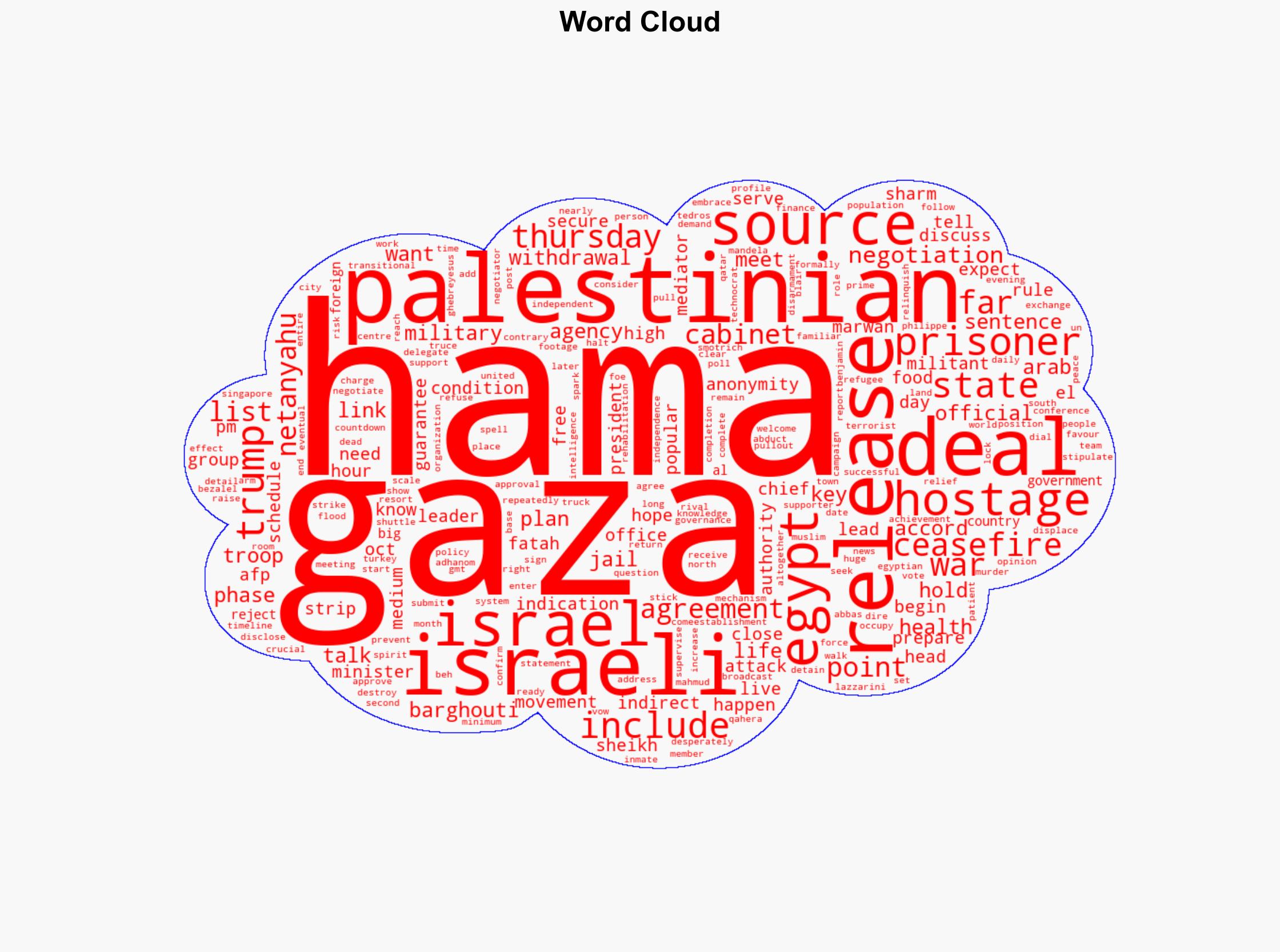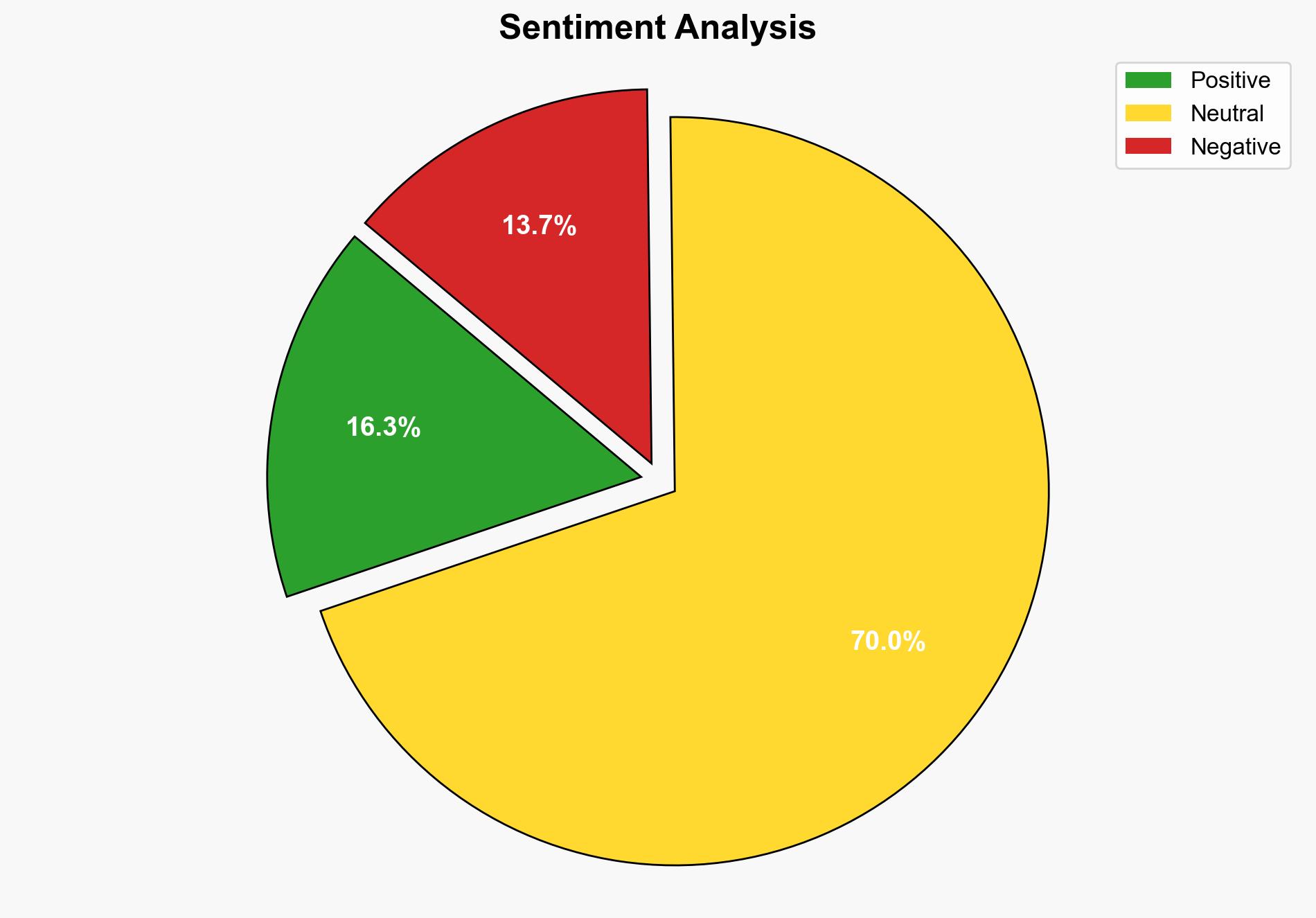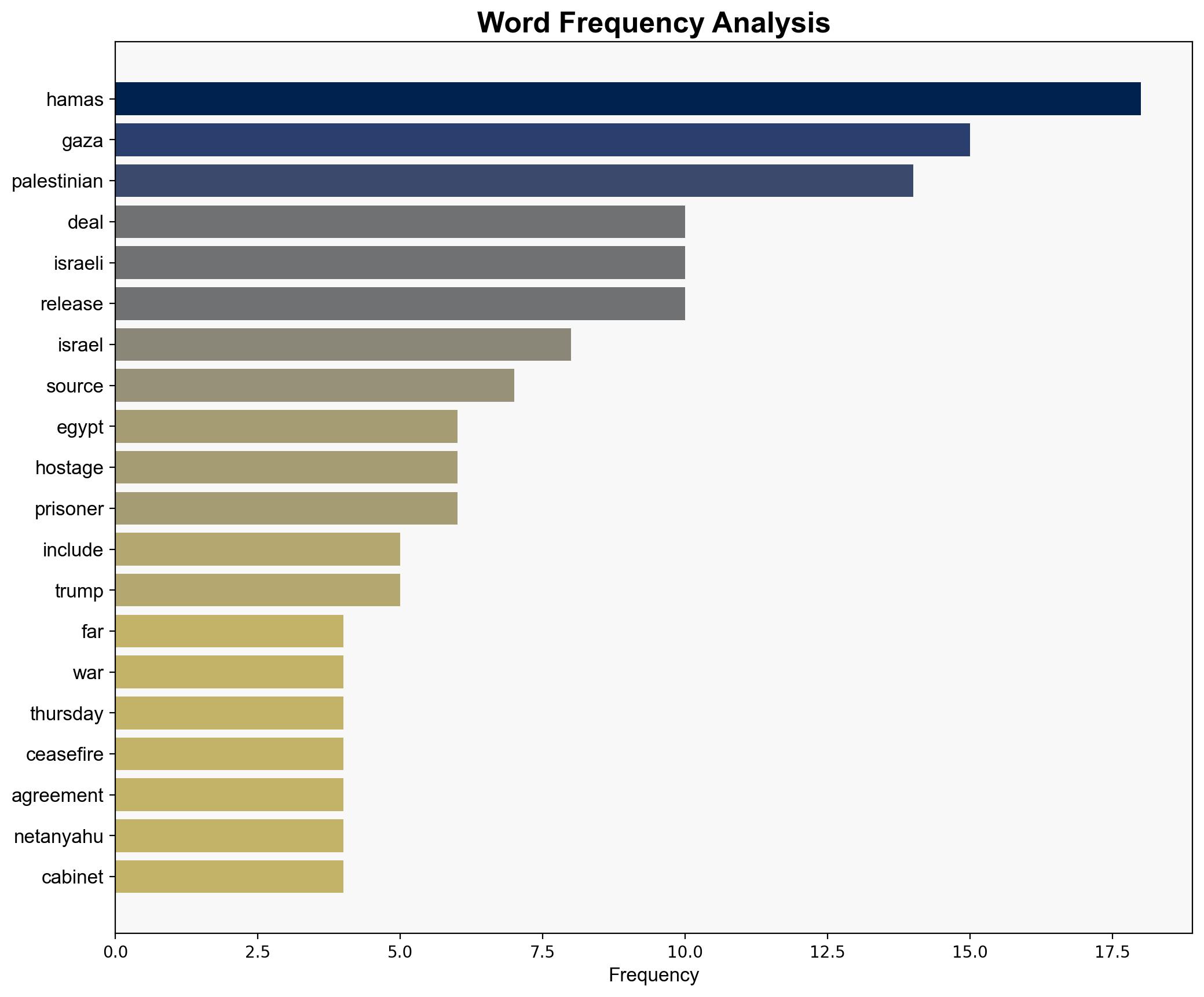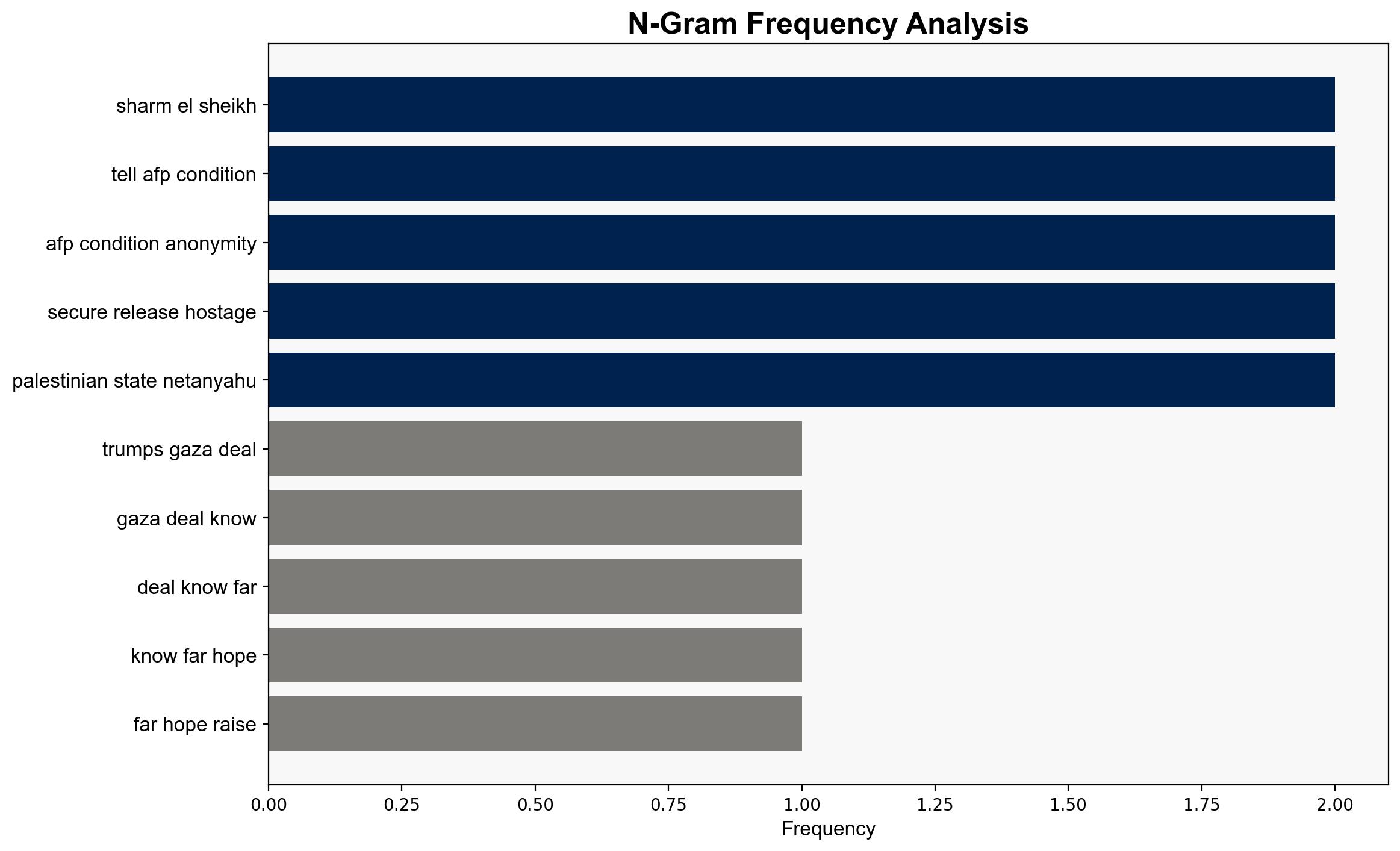Here’s what we know about Trump’s Gaza deal – CNA
Published on: 2025-10-09
Intelligence Report: Here’s what we know about Trump’s Gaza deal – CNA
1. BLUF (Bottom Line Up Front)
The most supported hypothesis is that the Gaza deal, mediated by Trump, aims to establish a temporary ceasefire and facilitate hostage exchanges, but its long-term success is uncertain due to potential non-compliance by involved parties. Confidence Level: Moderate. Recommended Action: Monitor compliance closely and prepare contingency plans for potential deal breakdowns.
2. Competing Hypotheses
1. **Hypothesis A:** The deal will lead to a sustained ceasefire and pave the way for a longer-term peace process, potentially leading to an independent Palestinian state.
– **Supporting Evidence:** The deal includes a phased ceasefire, hostage exchanges, and discussions on a transitional authority, indicating a structured approach to peace.
– **Contradictory Evidence:** Previous peace efforts have failed due to deep-seated mistrust and political opposition within Israel and Palestine.
2. **Hypothesis B:** The deal is a temporary measure that will not lead to lasting peace, with high potential for breakdown due to unresolved core issues and political opposition.
– **Supporting Evidence:** The deal lacks details on long-term political solutions, and key figures like Marwan Barghouti are involved, which may incite further tensions.
– **Contradictory Evidence:** The involvement of multiple international mediators could provide the necessary pressure to sustain the agreement.
3. Key Assumptions and Red Flags
– **Assumptions:** Both parties are genuinely committed to peace; international mediators can enforce compliance.
– **Red Flags:** Lack of transparency in prisoner release lists; potential non-disclosure of critical deal terms; reliance on indirect negotiations.
– **Blind Spots:** Internal political dynamics within Israel and Palestine that could derail the deal.
4. Implications and Strategic Risks
– **Geopolitical Risks:** A breakdown could lead to renewed hostilities, impacting regional stability and international relations.
– **Economic Risks:** Prolonged conflict could disrupt regional trade and economic recovery efforts.
– **Psychological Risks:** Failure of the deal could exacerbate distrust among the populations, hindering future peace efforts.
5. Recommendations and Outlook
- **Mitigation Actions:** Establish a robust monitoring mechanism to ensure compliance with the ceasefire and prisoner exchange terms.
- **Scenario Projections:**
– **Best Case:** Successful implementation leads to further negotiations and a stable peace process.
– **Worst Case:** Breakdown of the deal results in intensified conflict and regional destabilization.
– **Most Likely:** Temporary reduction in hostilities with periodic violations and slow progress on political solutions.
6. Key Individuals and Entities
– **Donald Trump:** Mediator of the deal.
– **Benjamin Netanyahu:** Prime Minister of Israel.
– **Marwan Barghouti:** High-profile Palestinian prisoner.
– **Mahmud Abbas:** Palestinian President.
– **Tedros Adhanom Ghebreyesus:** WHO Chief.
– **Philippe Lazzarini:** UN Agency Chief for Palestinian Refugees.
7. Thematic Tags
national security threats, counter-terrorism, regional focus, peace negotiations




